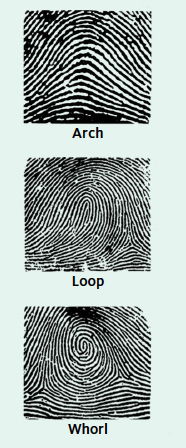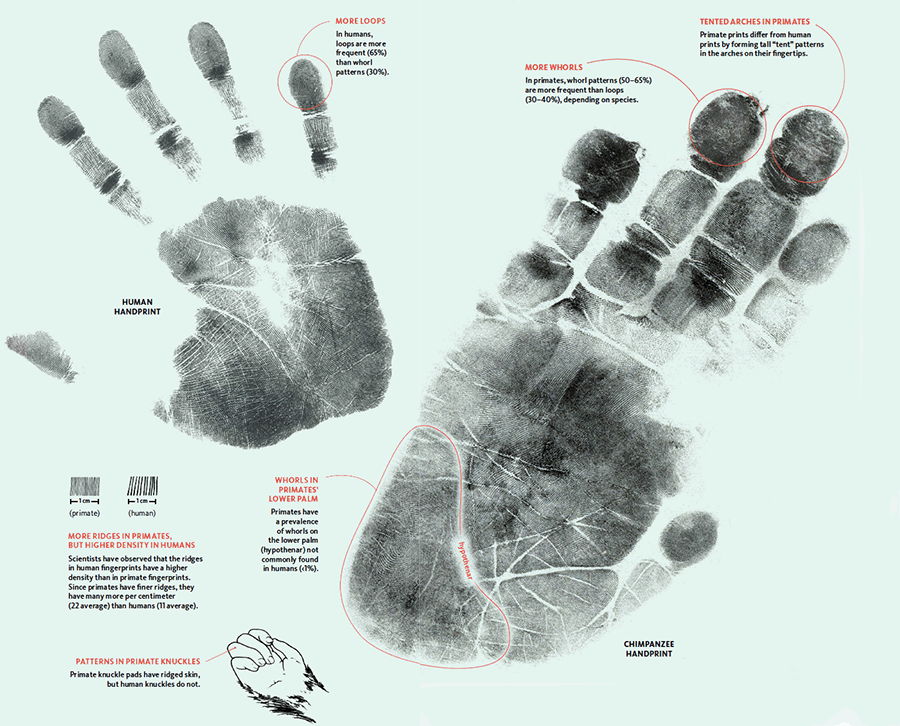Close, But Not Close Enough—Fingerprints
Fingerprints are iconic of forensic science because every person can be identified by his or her unique finger and toe prints. Literally all 10 fingers and toes are different from each other and from every other person. The patterns of raised, ridged skin provide us with a textured, nonslip surface to hold things, climb, walk, and run—all activities that benefit from a friction surface.
Consider this: Would primates benefit from friction skin on their hands and feet? Do they climb and hold their food? Yes!
Evolutionists claim that this similarity, or homology, between humans and primates is evidence of common ancestry. But closer study verifies fundamental differences that point to a common Designer.
Common Designer Not Common Ancestor
Both primates and humans have ridged skin, and each print is unique among primates, just as it is among humans. Evolutionists explain this similarity by inheritance from a common ancestor. But the Bible provides a perfect explanation: design.
These similarities reflect the Creator God who placed similar features among his creatures, such as skeletal structure and internal organs, to serve common needs while pointing toward the ingenuity of one all-powerful master Designer and Creator.
The Bible explains in Proverbs 16:4, “The Lord has made everything for its purpose.” That’s true of ridged skin, not just on our fingers and toes but across the entire surface of our hands and feet.

Three Patterns: Humans and primates share three basic types of fingerprint patterns, but the frequency of loops and whorls is very different.
More Loops
In humans, loops are more frequent (65%) than whorl patterns (30%).
More Ridges in Primates, but Higher Density in Humans
Scientists have observed that the ridges in human fingerprints have a higher density than in primate fingerprints. Since primates have finer ridges, they have many more per centimeter (22 average) than humans (11 average).
Whorls in Primates’ Lower Palm
Primates have a prevalence of whorls on the lower palm (hypothenar) not commonly found in humans (<1%).
Patterns in Primate Knuckles
Primate knuckle pads have ridged skin, but human knuckles do not.
More Whorls
In primates, whorl patterns (50–65%) are more frequent than loops (30–40%), depending on species.
Tented Arches in Primates
Primate prints differ from human prints by forming tall “tent” patterns in the arches on their fingertips.
Answers Magazine
January–February 2019
An engineering feat that far surpasses landing a man on the moon is taking place all around us.
Browse Issue
Answers in Genesis is an apologetics ministry, dedicated to helping Christians defend their faith and proclaim the good news of Jesus Christ.
- Customer Service 800.778.3390
- Available Monday–Friday | 9 AM–5 PM ET
- © 2025 Answers in Genesis




